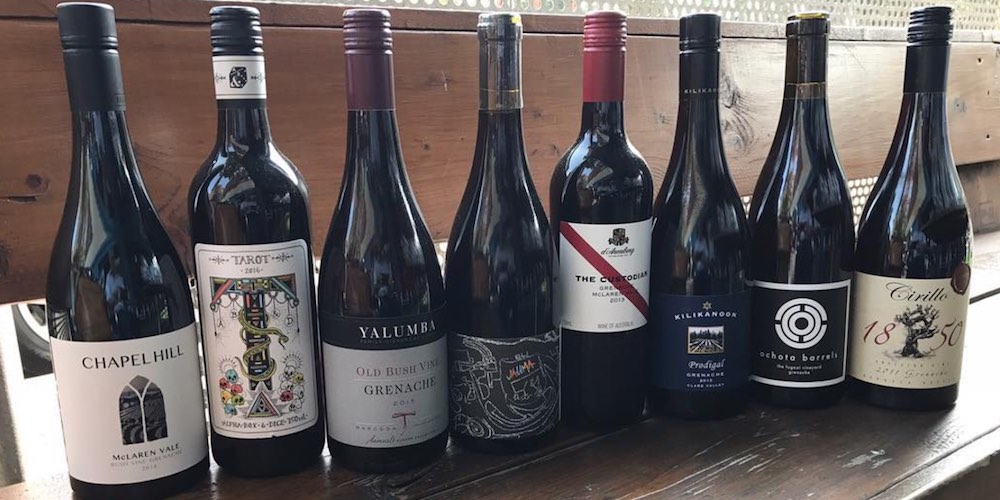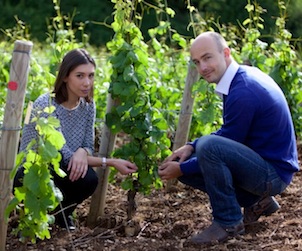Malcolm Jolley discovers Wine Australia’s varietal push.
 Mark Davidson is the chief educator for Wine Australia, which means he flies around the world tasting and talking about the country’s wines with sommeliers and journalists. He was in Toronto last week to do just that, and I was pleased to attend a seminar and lunch, with a dozen or so fellow winos, at Caplansky’s on College called Smoked Meat and Grenache led by him. I have lived in Montreal, so I know that the classic pairing to smoked meat is Cott’s Black Cherry soda. Cherry is often the primary flavour note for wines made with Grenache, like Châteauneuf-du-Pape. I asked Davidson if his choice of food to accompany our wine tasting was homage to that traditional deli match? Not at all, he explained. In fact the opposite: there were characteristics in smoked meat, and its international cousins like pastrami or salt beef, that reminded him of Grenache. And, he also confessed, there weren’t a lot of Jewish deli’s in Australia, so when he was in Canada or the States he tried to get in at least one visit to well known one.
Mark Davidson is the chief educator for Wine Australia, which means he flies around the world tasting and talking about the country’s wines with sommeliers and journalists. He was in Toronto last week to do just that, and I was pleased to attend a seminar and lunch, with a dozen or so fellow winos, at Caplansky’s on College called Smoked Meat and Grenache led by him. I have lived in Montreal, so I know that the classic pairing to smoked meat is Cott’s Black Cherry soda. Cherry is often the primary flavour note for wines made with Grenache, like Châteauneuf-du-Pape. I asked Davidson if his choice of food to accompany our wine tasting was homage to that traditional deli match? Not at all, he explained. In fact the opposite: there were characteristics in smoked meat, and its international cousins like pastrami or salt beef, that reminded him of Grenache. And, he also confessed, there weren’t a lot of Jewish deli’s in Australia, so when he was in Canada or the States he tried to get in at least one visit to well known one.
Before lunch we tasted eight wines (pictured above) in two flights, all made with 100% Grenache. Davidson explained why he chose the topic and wines we were about to try, and why Wines Australia is keen to get people interested in the Grenache grape. There is, he said a Grenache “evolution” going on among Australian producers. The grape, he explained was for a long time disparaged. It was widely planted in the 19th century because of its suitability to the Mediterranean-like climates of the Barossa Valley and McLaren Vale: it buds early and ripens late. Grenache can also famously provide a comparatively high yield. Production was mostly consigned to fortified wines (Australian “Port”), and the quality of the grapes were not particularly good. As the Australian wine industry modernized and began to really take stride in the last quarter of the twentieth century producers turned to ever popular Cabernet Sauvignon and Grenache’s Rhône cousin Syrah, which as Australian Shiraz developed a distinctly antipodean style of wine. Grenache got no respect.
 Davidson explained that all of this was changing. For one thing, the so called GSM blends became quite popular, so Grenache was getting vinified at high level, and the Grenache vines that weren’t replaced by other varietals, would have been the best ones, or at least better ones. And, they tended to be old. The process Davidson described reminded me of the surge in interest in indigenous grapes in places like Italy. In some ways Grenache might qualify as a kind of indigenous Australian grape, since it was planted early. Indeed, the oldest producing vines in the world are the Grenache ones planted in 1850.
Davidson explained that all of this was changing. For one thing, the so called GSM blends became quite popular, so Grenache was getting vinified at high level, and the Grenache vines that weren’t replaced by other varietals, would have been the best ones, or at least better ones. And, they tended to be old. The process Davidson described reminded me of the surge in interest in indigenous grapes in places like Italy. In some ways Grenache might qualify as a kind of indigenous Australian grape, since it was planted early. Indeed, the oldest producing vines in the world are the Grenache ones planted in 1850.
We tasted wine made from those oldest in world vines, the 2011 Cirillo 1850s Barossa Valley Grenache, which had a distinctive minty and herbal character. Actually, all the wines were distinct in some way, which was Davidson’s point and another reason why making wine with Grenache would appeal to ambitious winemakers: how the grape is treated in the field and in the cellar will greatly affect how it tastes in the glass. I realize this is true of all grapes, but I mean it in the sense that the various pleasant characteristics of the grape can be emphasized or muted.
The eight wines we tasted varied in price from $19.95 a bottle to $69 for the Cirillo (available through Bokke Wines). I enjoyed them all, but two really stood out. One was the 2016 Ochota Barrels Fugazi McLaren Vale Grenache, which was quite perfumed and full of black and blue notes like dark cherry and plum. Ochota Barrels it turns out is represented by The Living Vine, an agency that specializes in organic, natural and bio-dynamic producers. The other one I particularly enjoyed was the cheapest: the 2015 Yalumba Old Bush Vine Barossa Grenache, represented by B&W Wines, which specializes in Australian producers. It was pretty and bright and had more red fruit characteristics. It was what Mark Davidson called a “smashable wine”, and outstanding value for the price.
Once the tasting was over lunch was served. We ate from platters of rye bread and deli meats: smoked meat, but also tongue and turkey and fried beef salami. They all paired well, even with mustard.
I’ll be keeping an eye out for more single varietal Grenache from Australia, on wine lists and on store shelves, and I’ll be pleased that Mark Davidson gave me a head’s up on this new/old trend.







